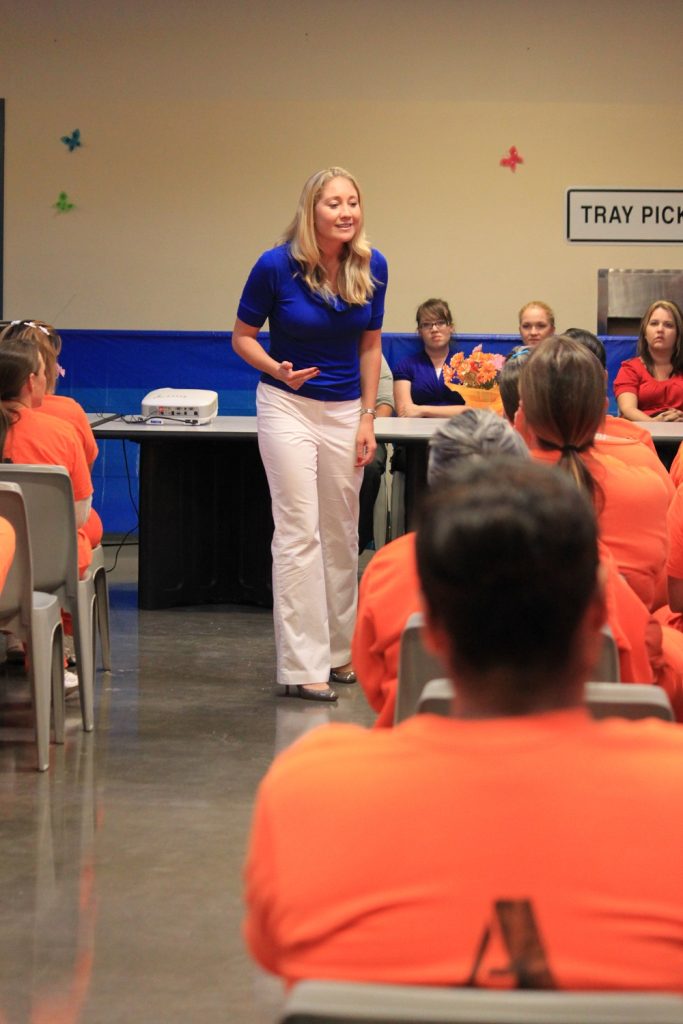Introduction
The term “Federal Correctional Institution” may evoke images of high walls, barred windows, and intense security measures. However, not all penal facilities are designed with such stringent containment protocols.
Welcome to the world of low-security federal prisons, a crucial part of the federal prison system, designed to house offenders who pose minimal escape risks and have been deemed less likely to engage in violent behavior.
What Is a Low-Security Prison?
Low-security federal correctional institutions account for a large portion of the population within the Federal Bureau of Prisons. Designed to maintain a secure and orderly environment, these facilities are notable for their rigorous security protocols.
With perimeter fencing, sophisticated electronic security systems, and a strong staff-to-inmate ratio, these prisons emphasise tight control over inmate movements, ensuring enhanced supervision.
BOOKS BY LARRY JAY LEVINE
 |  |  |
Explore available resources for more detailed information on the role and operations of low-security correctional institutions and to view a list of these facilities.
If you’re facing federal charges, getting expert guidance is crucial. Our team of experienced prison consultants is ready to help you navigate the complexities of preparing for a stay in federal prison. We assist in connecting you with a skilled federal criminal defence attorney and can help resolve any issues you might encounter while incarcerated.
These institutions serve a pivotal role in the correctional landscape, providing controlled environments where inmates can serve out their sentences while also accessing opportunities for personal growth and rehabilitation.
As we delve into this article, we will journey through the unique characteristics of these low-security facilities, shining a spotlight on some of the best examples across the United States.
Understanding the nuances that differentiate types of prisons is vital not just for individuals who might be facing incarceration, but also for those with an invested interest in criminal justice. This knowledge helps promote informed conversations about incarceration practices and supports efforts towards effective reform.
So whether you’re a student studying criminology, a family member supporting an incarcerated loved one, or simply curious about prison dynamics, this examination into low-security federal prisons promises to be insightful and enlightening.
1. Understanding Low-Security Federal Prisons
Low-security federal prisons, also known as Federal Correctional Institutions (FCIs), are an important part of the U.S correctional system. They hold inmates who pose minimal risk to the community and exhibit non-violent behavior. These facilities are specifically designed for inmates with shorter sentences or those nearing the end of their terms.
Inmate Classification Levels
The Bureau of Prisons (BOP) categorizes prisons into five security levels: minimum, low, medium, high, and administrative. This classification is based on various factors such as the seriousness of the offense, criminal history, behavior in previous incarcerations, and likelihood of escape.
Low-security federal prisons house offenders with low-level public safety factors. Inmates in these FCIs are usually first-time offenders or individuals convicted of non-violent crimes. The security measures in place at these facilities are less stringent compared to higher-security prisons.

Living Arrangements
The living conditions in low-security federal pory or cubicle-style housing.
- Dormitories: These open sleeping areas can accommodate multiple inmates. With bunk beds arranged in rows and lockers for personal belongings, dormitories encourage communal living and interaction among inmates.
- Cubicles: Some inmates have access to cubicle-style housing where each individual has their own designated space. Cubicles house fewer inmates compared to dormitories, providing a bit more privacy.
Both types of living arrangements allow for easy movement but are still supervised by prison staff. These setups support rehabilitative activities such as group therapy sessions or educational classes.
Inmate-to-Staff Ratio
Safety is a top priority even in low-security FCIs. Therefore, maintaining a balanced inmate-to-staff ratio is crucial. An adequate number of staff members are assigned to ensure compliance with rules and address any potential issues promptly.
In low-security federal prisons, the inmate-to-staff ratio is generally higher compared to medium or high-security prisons. This is because inmates in these facilities are considered less likely to be a threat or attempt escape. However, the staff is well-trained to handle any situation that may arise, ensuring overall safety and security.
As we explore the world of low-security federal prisons, it becomes evident that these institutions serve an important role within the correctional system. They offer a safe environment for individuals deemed low-risk while fostering an atmosphere conducive to rehabilitation and personal development.
In the following sections, we will delve deeper into the demographics of inmates housed in these facilities, the safety measures implemented, and the day-to-day experiences of those living behind these walls.
2. Inmate Population and Offender Types in Low-Security Prisons
When we look at the federal inmate population in low-security prisons, it’s important to know what kind of crimes these people have committed. There are many different types of prisoners in these facilities, coming from various backgrounds and with a range of offenses.
2.1 Drug Offenders
A significant number of inmates in low-security prisons are drug offenders. They have been incarcerated for crimes related to drugs, such as possession, distribution, or manufacturing. These individuals are often seen as non-violent offenders.
Contrary to what some might think, higher security prisons don’t necessarily house the majority of drug-related offenders. In fact, statistics show that low-security facilities have a higher concentration of these inmates.
There are a few reasons for this:
- Sentencing Guidelines: The Federal Sentencing Guidelines have specific rules for drug offenses, which often result in imprisonment even for first-time or non-violent offenders.
- Risk Assessment: Drug offenders, especially those convicted of possession or distribution, are generally considered to be less dangerous compared to violent criminals or those involved in organized crime.
- Focus on Rehabilitation: Low-security prisons place more emphasis on helping inmates reform and reintegrate into society rather than just punishing them. Since many drug offenses are connected to substance abuse problems, these institutions offer treatment programs that address the underlying issues.
2.2 White-Collar Offenders
Contrary to what we often see in movies or TV shows, not all prisoners in low-security federal prisons are there for drug-related crimes. A significant portion of them are white-collar offenders, who have been convicted of non-violent crimes typically involving dishonesty or misuse of power for personal or financial gain.
There are several reasons why white-collar offenders might end up in low-security facilities:
- Non-Violent Nature: White-collar crimes like fraud, embezzlement, or tax evasion usually don’t cause physical harm to others. As a result, authorities consider these offenders to be low risk.
- First-Time Offenders: Many white-collar criminals have never been in trouble with the law before and behave well while they’re in prison.
- Program Availability: Some low-security prisons have specific programs designed for white-collar offenders. These programs focus on counseling, education, and skill-building, which can be beneficial for these individuals once they’re released.
Understanding the different types of inmates is crucial for comprehending how low-security federal prisons work and what their objectives are. In the next section, we’ll explore further the balance between safety measures and rehabilitation efforts within these institutions.
Safety, Security, and Rehabilitation Programs in Low-Security Prisons
Low-security federal prisons strike a delicate balance between safety protocols and offering rehabilitation programs. These facilities are designed to manage inmates who pose less of a risk to the public and staff, creating an environment where rehabilitation is not only possible but encouraged.
However, this does not mean that challenges such as institutional disturbances and gang activities are absent.
Institutional Disturbances
Instances of unrest can occur even within low-security settings. Gangs can infiltrate these institutions, attempting to exert control over certain aspects of prison life, from the underground economy to intimidating other inmates.
To mitigate these risks, prison officials implement various strategies:
- Continuous Monitoring: Surveillance systems and frequent checks by staff are used to detect any unusual activities that might indicate brewing disturbances.
- Gang Management Programs: These specialized programs aim to reduce gang influence by monitoring communications, segregating known gang members when necessary, and providing educational opportunities to encourage disaffiliation from gangs.
- Conflict Resolution: Offering training for both staff and inmates on defusing tensions can prevent minor disagreements from escalating into larger conflicts.

Prison Programs
The emphasis on rehabilitation is evident through the range of programs offered in low-security federal prisons. These are tailored to assist inmates in gaining new skills, addressing substance abuse issues, or obtaining vocational training.
Some notable programs include:
- Educational Opportunities: GED preparation classes, post-secondary education courses, and even distance learning programs help prepare inmates for successful reentry into society.
- Vocational Training: Inmates have the chance to learn trades such as carpentry, horticulture, or culinary arts which can be instrumental in finding employment post-release.
- Substance Abuse Programs: Recognizing the high number of inmates with drug-related offenses, comprehensive substance abuse treatment including counseling and relapse prevention planning is available.
Addressing Safety Concerns
For prison staff at low-security facilities, ensuring safety without imposing excessive restrictions is crucial. Staff training focuses on interpersonal communication skills critical for interacting with inmates effectively. Correctional officers are also trained to recognize signs of potential security breaches or behavioral changes in inmates that could indicate problems.
In addition to staffing measures:
- Risk Assessments: Regular evaluations of inmates help determine any changes in their risk level and whether they require different security measures.
- Inmate Committees: Some institutions form committees made up of inmate representatives who communicate concerns and suggestions directly to prison management.
By fostering a secure environment through vigilance and proactive measures against institutional disturbances like gangs while prioritizing rehabilitation programs, low-security federal prisons contribute positively to the goals of the correctional system. They provide a setting where those incarcerated can work towards personal growth and prepare for their eventual return to society.
The efforts made to maintain safety while promoting rehabilitation reflect an understanding that successful reentry starts within the prison walls through constructive programming and support. Moving forward into discussing life within these facilities reveals how these efforts materialize in the daily experiences of inmates.
4. Life and Community Dynamics for Inmates in Low-Security Prisons
The social landscape within low-security federal prisons is governed by a unique set of norms and conventions that are often referred to as prison politics. These unwritten regulations, primarily dictated by inmates, shape the power dynamics and hierarchies within the prison community.
The initiation into this intricate social structure begins at the inmate housing units. The dormitory-style housing, or cubicle-style complexes, are usual features of low-security federal prisons. Such open environments catalyze interactions among inmates, leading to the formation of a tightly-knit community.
Social Hierarchies and Power Dynamics
The hierarchies within these prisons are typically influenced by an inmate’s criminal record, demeanor, and sometimes even their outside affiliations. Those who command respect due to their criminal reputation or charismatic personality often emerge as leaders.
Gangs play a significant role in shaping prison politics. Each gang operates like a mini-society within the larger prison community with its own rules and leaders. Loyalty to one’s gang often takes precedence over other relationships – a fact that significantly impacts the power dynamics within these facilities.
However, in low-security prisons where non-violent offenders form a significant part of the population, there is usually less gang influence. These institutions tend to have more relaxed atmospheres where individuals can serve their sentences without fear of violence or intimidation.
Impact of Physical Environment on Inmate Experiences
The open dormitories and shared living spaces in low-security prisons significantly influence inmates’ experiences. The lack of privacy can be challenging for many inmates but it also fosters an environment where individuals must learn to coexist peacefully.
Access to common areas such as TV rooms or recreation yards provides opportunities for socialization and recreational activities. The ability to engage with peers in such environments often leads to the formation of supportive networks among inmates. These connections can prove crucial in navigating the challenges of prison life.
The housing units’ design also influences the behavior of inmates. Facilities with well-lit, clean, and open spaces tend to encourage positive behavior among residents. In contrast, poorly maintained or overcrowded facilities can breed tension and hostility.
In the end, life in low-security federal prisons is a complex tapestry woven from inmate interactions, environmental factors, and institutional policies. Understanding these dynamics is essential for individuals facing incarceration and those interested in the criminal justice system.
5. Interactions Between Inmates and Staff in Low-Security Prisons
A critical aspect of everyday life for long-term prisoners is their interaction with prison staff. The unique dynamics of low-security federal prisons can present both opportunities and challenges for these individuals.
Long-term prisoners, by virtue of their extended stay, often become well-acquainted with the social dynamics of prison life. They adapt to the established norms, rules, and power structures within inmate communities. However, this familiarity does not always translate to a smooth navigation through institutional dynamics.
Challenges Faced By Long-Term Prisoners
Low-security prisons house a diverse population ranging from first-time offenders serving short sentences to long-term inmates with extensive criminal histories. This diversity can lead to tension and conflict, as different groups vie for dominance or struggle to fit in.
Long-term prisoners often find themselves caught in the middle of these power struggles. They may be targeted by newcomers seeking to establish their position or ostracized by other long-timers for perceived slights or disagreements.
These interpersonal issues are further complicated by the need for inmates to maintain an amicable relationship with the prison staff. While inmates must adhere to the rules and regulations set forth by the institution, they also need to navigate the informal expectations and unspoken codes that govern inmate-staff relationships.
Importance of Positive Inmate-Staff Relationships
Maintaining positive interactions between inmates and staff members is pivotal for creating a secure yet humane prison environment. Staff members play a crucial role in maintaining order within the institution while also providing key services such as healthcare, education, and rehabilitative programs.
Inmate-staff relationships in low-security federal prisons can be complex. They often involve a delicate balancing act between maintaining institutional control and fostering an atmosphere of respect and understanding.
Positive interactions contribute significantly towards reducing tensions within the prison environment. They can help foster a sense of community and mutual respect, reducing the likelihood of conflicts and violence. Conversely, negative interactions can exacerbate tensions, potentially leading to a volatile and unsafe environment.
Trust plays a crucial role in these interactions. Inmates need to trust that staff members will treat them fairly and without bias. Similarly, staff members need to trust that inmates will follow the rules and not pose a threat to the safety of the institution.
In low-security federal prisons, where many inmates are serving long sentences for non-violent offenses, this trust is particularly important. These individuals often have a strong desire to reintegrate into society and may be more willing to engage in positive behaviors if they feel respected and understood by prison staff.
The social dynamics within low-security federal prisons are complex and multifaceted. The interactions between long-term prisoners and staff members play a pivotal role in shaping these dynamics. By fostering positive relationships and mutual respect, it is possible to create a safe yet humane environment that facilitates inmate rehabilitation.
Best Low-Security Federal Prisons in the United States
The spectrum of federal correctional facilities in the United States includes several low-security institutions renowned for their programs and living conditions. Among these, certain facilities stand out as exemplary models of what low-security prisons can offer.
Federal Correctional Institution Miami
Federal Correctional Institution Miami, located in Florida, is often recognized for its comprehensive approach to inmate rehabilitation.
Unique features of this institution include:
- Work Programs: Inmates have opportunities to engage in work assignments that can range from landscaping to clerical work, aiding in skill development.
- Education Opportunities: It offers a variety of educational programs including GED and ESL courses, college courses, and vocational training which are crucial for post-release employment prospects.
- Recreational Activities: A wide array of leisure activities are provided, which support mental health and social skills.
Lompoc Federal Correctional Complex
Lompoc Federal Correctional Complex, situated in California, boasts a range of facilities that cater to different security levels.
Its low-security component is particularly noted for:
- Environmental Programs: Lompoc has initiatives that focus on sustainability and conservation, allowing inmates to contribute to environmental projects.
- Community Connections: There’s a strong emphasis on maintaining ties with the outside world through community involvement programs.
- Health Services: The institution provides extensive medical and psychological services ensuring inmates’ well-being.
Sheridan Federal Correctional Institution
In Oregon, the Sheridan Federal Correctional Institution is another facility that garners attention for its favorable attributes:
- Residential Drug Abuse Program (RDAP): Sheridan offers this intensive treatment program for inmates with substance use issues, which may also result in reduced sentences upon successful completion.
- Apprenticeship Programs: These allow inmates to learn trades such as plumbing and electrical work under expert supervision.
- Holistic Approach: Emphasizing all-around wellness, Sheridan provides activities and resources that address physical fitness, spiritual needs, and mental health.
Each of these institutions reflects the potential for low-security prisons to not only house offenders but also equip them with tools for a more positive future. By focusing on rehabilitation and offering constructive programs, best low security federal prisons like Federal Correctional Institution Miami, Lompoc Federal Correctional Complex, and Sheridan Federal Correctional Institution exemplify how correctional facilities can facilitate successful reentry into society.
Preparing for Visits to Low-Security Federal Prisons
Visiting a loved one in prison can be an emotional and, at times, overwhelming experience. Preparation is key to ensure that the visit goes smoothly and serves its purpose of maintaining strong familial and social bonds.
One resource that can greatly aid in this preparation process are federal prison consultants. These are professionals who have extensive knowledge about the federal prison system. They offer advice on various matters related to incarceration, including visitation rules, inmates’ rights, and how to navigate the often complex world of correctional facilities.
Federal prison consultants provide valuable information on what to expect during your visit. They can guide you on the following aspects:
- Visitation procedures: This includes understanding the process of getting approval for visits, scheduling a visit, and what to do upon arrival at the facility.
- Dos and Don’ts: There are certain rules that visitors must adhere to when inside the prison premises. This could involve dress code restrictions, items allowed inside the visiting room, and acceptable behavior during the visit.
- Communication with inmates: Consultants can also help you understand how best to communicate with your incarcerated loved ones. This could be especially helpful for first-time visitors who may be unsure about what topics are permitted or how to deal with potentially tricky conversations.
Being aware of these factors not only ensures a stress-free visit but also helps maintain a safe and respectful environment within the prison walls.
In addition to leveraging resources like federal prison consultants, individuals planning a visit should also familiarize themselves with specific regulations of the low-security federal prison they plan on visiting. Each facility may have its own set of rules that need to be followed.
These might include:
- Visiting hours: Each prison has designated days and hours for visits.
- Identification requirements: Visitors will need appropriate identification documents.
- Visitor screening: Expect security checks upon entering the facility.
Remember, a visit to a low-security federal prison is not just about seeing a loved one, it is also an opportunity to provide them with emotional support and encouragement. The more prepared you are, the more comfortable and beneficial the visit will be for both you and your incarcerated loved one.
Conclusion
Low-security federal prisons are a vital component of the federal correctional framework, designed to house inmates who pose less risk to the public and to the security of a prison. These Federal Correctional Institutions represent an essential tier within the federal prison system, where the emphasis on rehabilitation over excessive confinement is particularly pronounced.
The balance between security and opportunities for growth and reform in low-security federal prisons underscores the potential for more humane approaches to incarceration. It is imperative that these institutions continue to evolve, integrating programs that support inmate reintegration into society.
Exploring Prison Reform Resources:
- Educate Yourself: Delve into literature and studies on prison reform to understand the challenges and opportunities within the system.
- Engage with Advocacy Groups: Connect with organizations that work towards criminal justice reform to stay informed about ongoing initiatives.
- Support Inmate Rehabilitation: Consider volunteering or donating to programs focused on education and skill development for inmates.
Recognizing the complexities of the criminal justice system is crucial for anyone interested in or affected by incarceration. By seeking out resources and engaging with various perspectives on prison reform, individuals can contribute to meaningful change in how society approaches correction and rehabilitation.
FAQs (Frequently Asked Questions)
What are low-security federal prisons and their role within the correctional system?
Low-security federal prisons are a type of correctional institution that houses inmates with lower security needs. They play a crucial role in the federal prison system by providing a controlled environment for individuals who may not require maximum security measures.
What are the living arrangements provided to inmates in low-security federal prisons?
In low-security federal prisons, inmates are typically housed in dormitories or cubicle-style housing. These arrangements allow for a more open and communal living environment compared to higher security facilities.
How is the staff-to-inmate ratio maintained in low-security federal prisons?
Low-security federal prisons maintain a staff-to-inmate ratio to ensure safety and security within the facilities. This ratio is carefully managed to provide adequate supervision and support for the inmate population.
What is the demographic makeup of the federal inmate population in low-security prisons?
The federal inmate population in low-security prisons consists of individuals from various demographic backgrounds. This includes a notable presence of drug offenders and white-collar offenders who have been classified based on their risk level and behavior in custody.
How do low-security federal prisons balance safety measures and rehabilitation initiatives?
Low-security federal prisons strive to maintain a balance between safety measures and the need for rehabilitation programs. This approach aims to create an environment that promotes positive behavioral change while ensuring the overall security of the institution.
What are some of the top-rated low-security federal prisons in the United States?
Some of the best low-security federal prisons in the United States include Federal Correctional Institution Miami, Lompoc Federal Correctional Complex, and Sheridan Federal Correctional Institution. These facilities are known for their unique features and comprehensive programs for incarcerated individuals.
